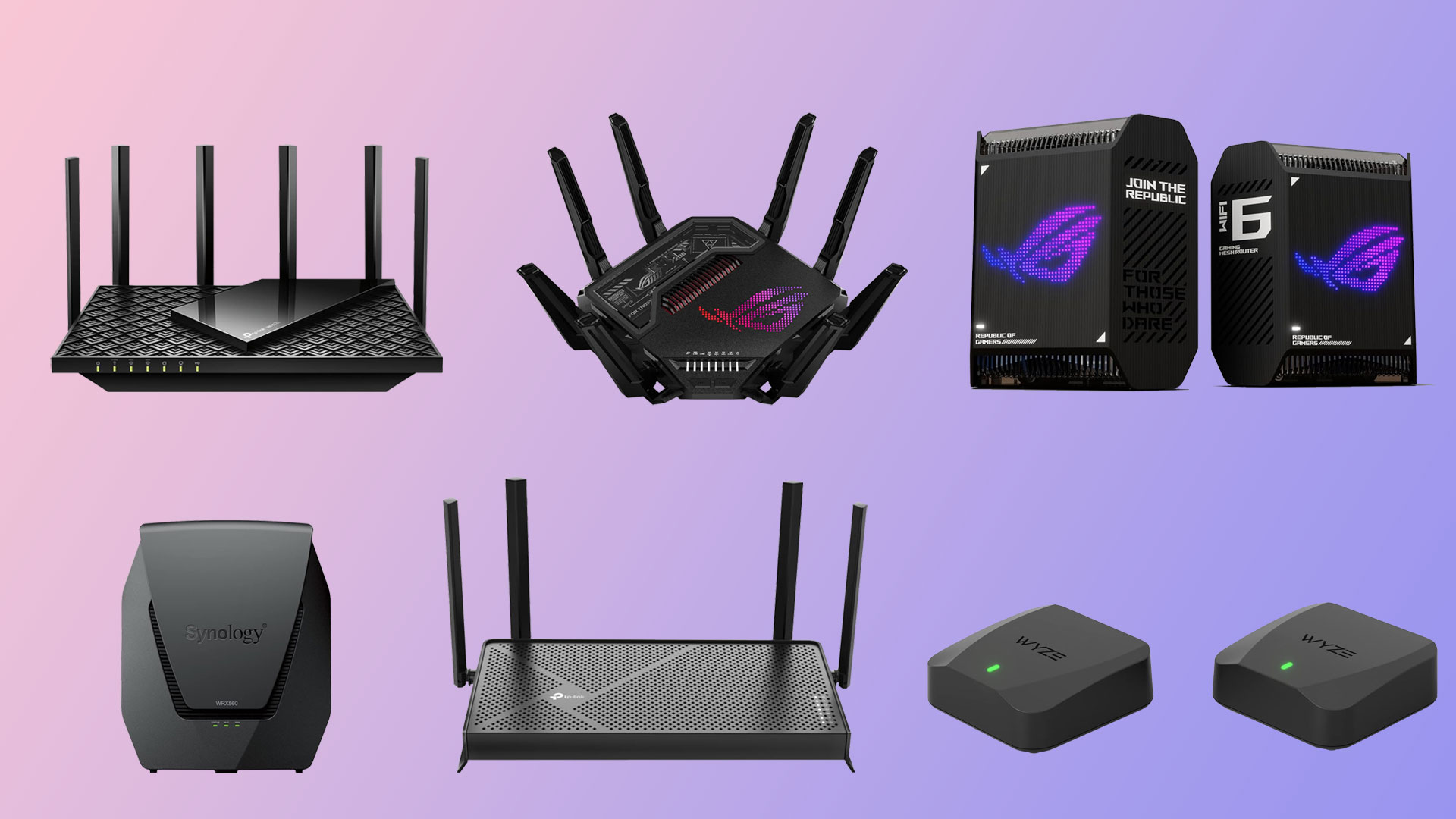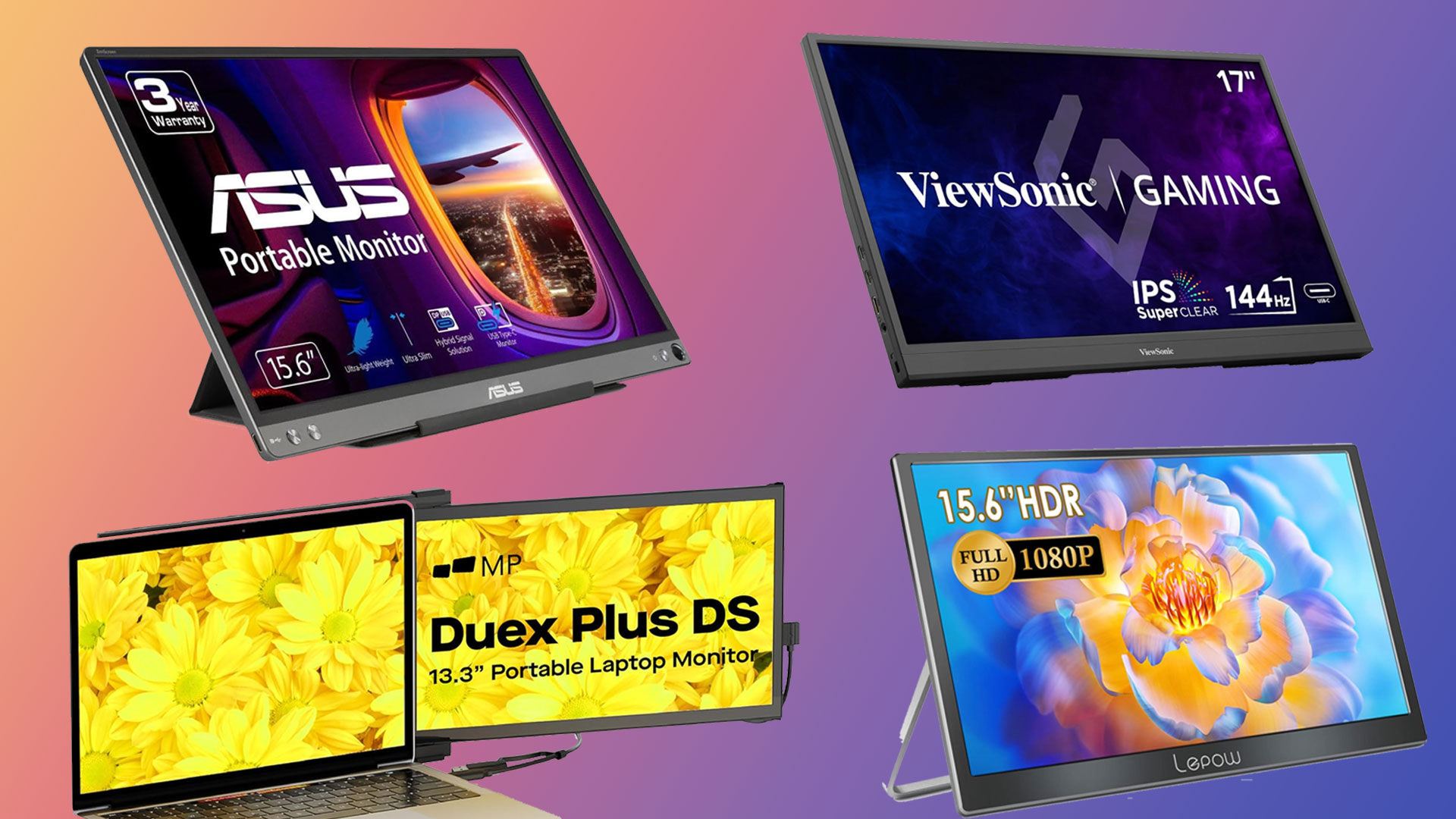A high-performance wireless router is essential in 2025 for seamless streaming, gaming, smart home management, and remote work. This guide explores the latest wireless router technology, market trends, and essential features to help you choose a future-proof router that optimizes your internet connection.
A high-performance wireless router is essential in 2025 for seamless 4K streaming, online gaming, smart home device management, and remote work. This guide explores the best wireless routers for 2025, including Wi-Fi 7 and advanced features, to help you choose a future-proof router that optimizes your internet connection for speed, coverage, and stability.
The Best Wireless Routers for 2025
Table of Contents
What to Look For in a Wireless Router in 2025
Choosing the right wireless router in 2025 involves more than just picking the fastest one. With the evolution of home networks and the increasing sophistication of cyber threats, several factors come into play. Here’s a breakdown of what to prioritize:
1. Wi-Fi Standard: Wi-Fi 6 (802.11ax) and Wi-Fi 6E are Essential
While older Wi-Fi standards like Wi-Fi 5 (802.11ac) are still prevalent, Wi-Fi 6 is now the baseline for new router purchases. It offers significant improvements in speed, efficiency, and capacity, especially in environments with many connected devices. Wi-Fi 6E, which utilizes the 6GHz band, is even better, providing a dedicated superhighway for compatible devices, reducing interference, and offering ultra-low latency. If you have devices that support Wi-Fi 6E, investing in a Wi-Fi 6E router is highly recommended for optimal performance.
2. Speed and Performance: Beyond Raw Numbers
Router manufacturers often advertise theoretical maximum speeds, but real-world performance depends on many factors, including your internet service provider (ISP) speed, home layout, and device capabilities. Look for routers with strong processors and ample RAM to handle multiple data streams efficiently. Features like OFDMA (Orthogonal Frequency Division Multiple Access) and MU-MIMO (Multi-User, Multiple-Input, Multiple-Output) are crucial for managing traffic from numerous devices simultaneously, ensuring smoother performance for everyone on the network.
3. Coverage and Range: Mesh Systems for Larger Homes
For larger homes or those with dead zones, a single router may not suffice. Mesh Wi-Fi systems are designed to provide seamless, whole-home coverage by using multiple interconnected units. These systems are easy to set up and manage, automatically optimizing connections as you move around your home. Consider the size and layout of your home when deciding between a traditional router and a mesh system.
4. Security Features: Your First Line of Defense
With cyber threats becoming more sophisticated, a router’s security features are paramount. Look for routers that offer WPA3 encryption, the latest and most secure Wi-Fi security protocol. Additional features like built-in firewalls, intrusion detection systems, and automatic firmware updates are also vital. Many modern routers also include parental controls, guest networks, and even integrated antivirus or malware protection to safeguard all connected devices.
5. Ports and Connectivity: Wired Options Still Matter
While wireless is convenient, wired connections offer superior speed and stability for devices like gaming consoles, desktop PCs, and network-attached storage (NAS) devices. Ensure the router has enough Gigabit Ethernet ports for your needs. Some high-end routers also offer 2.5Gbps or even 10Gbps Ethernet ports for ultra-fast wired connections, which can be beneficial for power users or those with multi-gigabit internet plans.
6. Ease of Setup and Management: User-Friendly Interfaces
Modern routers often come with intuitive mobile apps that simplify the setup process and allow for easy management of network settings, parental controls, and security features. Look for routers with user-friendly interfaces that make it easy to monitor your network, troubleshoot issues, and customize settings without needing extensive technical knowledge.
7. Quality of Service (QoS): Prioritizing Your Traffic
Quality of Service (QoS) features allow you to prioritize certain types of network traffic, ensuring that critical applications like video conferencing or online gaming receive sufficient bandwidth, even when other devices are consuming a lot of data. This can significantly improve the user experience for bandwidth-intensive activities.
8. Price and Value: Balancing Cost and Features
Wireless router prices vary widely, from budget-friendly options to high-end models with advanced features. Consider your budget and the features that are most important to you. Sometimes, spending a bit more upfront on a higher-quality router can save you headaches and provide a better overall experience in the long run. Remember to factor in potential long-term savings from improved performance and reduced troubleshooting.
Top Wireless Routers for 2025: Our Top Picks
Based on extensive testing and evaluation, here are some of the best wireless routers available in 2025, catering to various needs and budgets. These selections prioritize performance, features, and overall value, incorporating the latest Wi-Fi standards and security protocols.
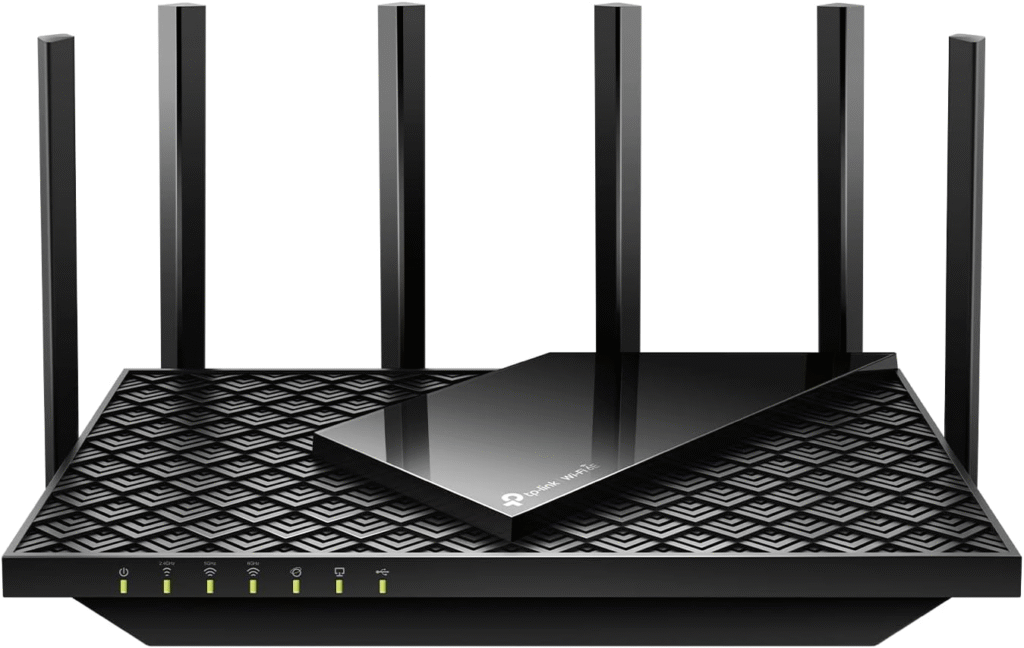
1. TP-Link Archer AXE75 (AXE5400 Tri-Band Wi-Fi 6E Router)
Why we recommend it: This router stands out as an excellent all-around choice for most users, offering a balance of performance, features, and affordability. It supports Wi-Fi 6E, leveraging the less congested 6GHz band for compatible devices, which translates to faster speeds and lower latency. Its easy installation process and inclusion of HomeShield software (though some features require a subscription) make it user-friendly.
Pros:
- Easy to install
- Reasonably priced
- Supports 6GHz transmissions (Wi-Fi 6E)
- Solid throughput performance
- Includes HomeShield software for network security and parental controls
- Mesh-ready for expanded coverage
Cons:
- Middling file transfer performance
- No multi-gig ports
- Some features require a subscription

2. Synology WRX560
Why we recommend it: For those seeking robust all-around performance and advanced network management, the Synology WRX560 is a strong contender. It delivers excellent throughput and signal performance, ensuring a stable and fast connection across your home. Its built-in parental control and network security software add significant value, and its multi-gig WAN/LAN port is a welcome addition for high-speed internet connections.
Pros:
- Easy installation
- Excellent throughput and signal performance
- Built-in parental-control and network-security software
- Mesh-ready
- Multi-gig WAN/LAN
Cons:
- Middling file transfer performance
- Top-heavy design

3. TP-Link Archer BE230 BE3600 Dual-Band Wi-Fi 7 Router
Why we recommend it: As an entry into the cutting-edge Wi-Fi 7 standard, the Archer BE230 offers a glimpse into the future of wireless networking at a reasonable price. While it doesn’t include the 6GHz band, its Wi-Fi 7 capabilities provide solid throughput performance and multi-gig connectivity, making it a good option for early adopters who want to future-proof their network without breaking the bank.
Pros:
- Reasonably priced for a Wi-Fi 7 router
- Solid throughput performance
- Multi-gig connectivity
Cons:
- No 6GHz band
- Does not support 320MHz channels (a key Wi-Fi 7 feature)
- Middling signal coverage
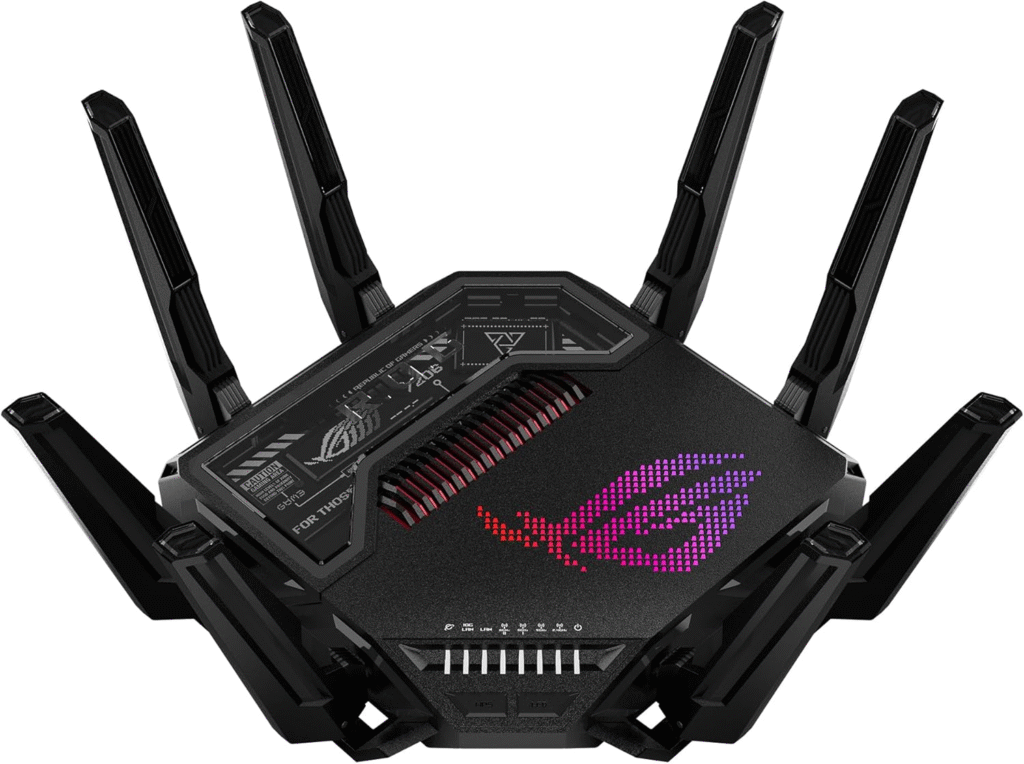
4. Asus ROG Rapture GT-BE98 Pro
Why we recommend it: Serious gamers and power users will find the Asus ROG Rapture GT-BE98 Pro to be a powerhouse. This Wi-Fi 7 router boasts 320MHz channel bandwidth and multiple 10GbE ports, delivering blazing throughput performance. Its gamer-friendly network customization options and robust network security features make it an ideal choice for demanding online activities.
Pros:
- Wi-Fi 7 with 320MHz channel bandwidth
- 10GbE port, plus several more multi-gig ports
- Blazing throughput performance
- Gamer-friendly network customization
- Network security and parental controls
Cons:
- Expensive
- Bulky design
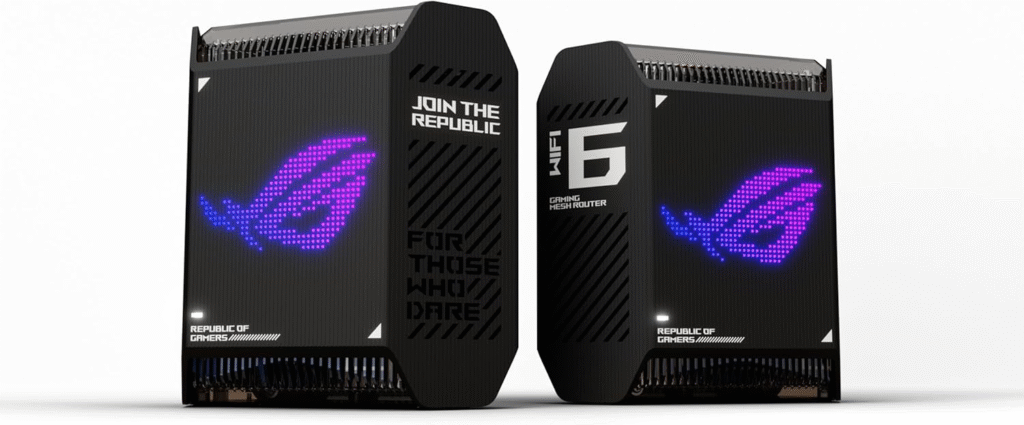
5. Asus ROG Rapture GT6 Wi-Fi 6 Gaming Mesh System
Why we recommend it: For gamers in larger homes, the Asus ROG Rapture GT6 mesh system offers excellent performance and wide coverage. Its multi-gig WAN with a strong broadcast signal ensures a stable connection, and its sleek design blends well into any home. It also includes anti-malware and parental control software, providing a comprehensive gaming and family-friendly solution.
Pros:
- Multi-gig WAN with strong broadcast signal
- Sleek design
- Speedy throughput performance
- Lots of game-friendly features
- Included anti-malware and parental control software
Cons:
- Expensive
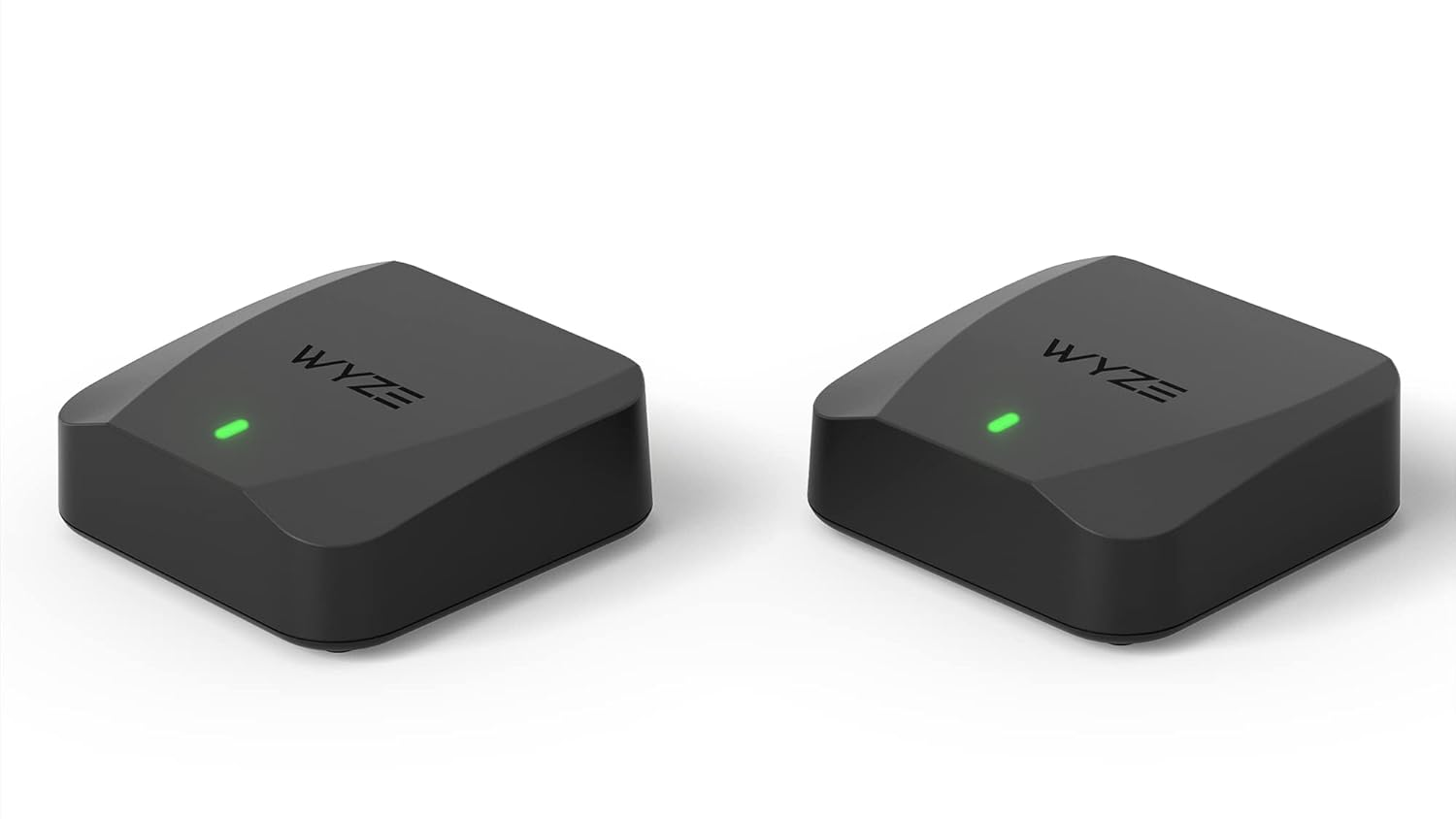
6. Wyze Wi-Fi 6E Mesh Router Pro
Why we recommend it: The Wyze Wi-Fi 6E Mesh Router Pro offers a reasonably priced entry into Wi-Fi 6E mesh networking. It provides strong 5GHz throughput performance and includes multi-gig Ethernet and USB connectivity. Its built-in network security software and low-profile nodes make it a practical choice for those seeking affordable whole-home Wi-Fi 6E coverage.
Pros:
- Reasonably priced
- Wi-Fi 6E support
- Strong 5GHz throughput performance
- Multi-gig Ethernet and USB connectivity
- Built-in network security software
- Low-profile nodes
Cons:
- Lacks strong parental controls
- Limited settings
Conclusion
Choosing the best wireless router in 2025 is about more than just raw speed; it’s about building a robust, secure, and efficient network that can handle the demands of modern digital life. With the continued proliferation of IoT devices, the widespread adoption of Wi-Fi 6 and Wi-Fi 6E, and the increasing reliance on mesh networking, the market offers a diverse range of options to suit every need and budget.
By focusing on key features like the latest Wi-Fi standards, strong security protocols, and user-friendly management, you can ensure your home or office network is not only fast and reliable today but also prepared for the technological advancements of tomorrow. Remember to consider your specific needs, such as the size of your home, the number of connected devices, and your internet usage habits, to make the most informed decision. A well-chosen router is the cornerstone of a seamless and enjoyable online experience.
Key Trends Shaping the Wireless Router Market in 2025
The wireless router market is undergoing significant transformation, driven by several pivotal factors that reflect our increasingly digital lives. Understanding these trends is crucial for anyone looking to invest in new networking hardware.
1. Explosive Growth of IoT Devices and Smart Homes
The proliferation of Internet of Things (IoT) devices continues to be a primary catalyst for market expansion. From smart thermostats and lighting systems to security cameras and voice assistants, homes are becoming more interconnected than ever before. This surge in connected devices demands routers capable of handling multiple simultaneous connections without compromising performance. The global wireless router market is estimated to be $15 billion in 2025, with a Compound Annual Growth Rate (CAGR) of 8% between 2025 and 2033, projected to reach approximately $28 billion by 2033 [1]. This growth trajectory is largely fueled by the need for seamless wireless networking capabilities for these devices.
2. Adoption of Wi-Fi 6 and Wi-Fi 6E Standards
Technological advancements, particularly the widespread adoption of Wi-Fi 6 (802.11ax) and the emerging Wi-Fi 6E standards, are significant drivers. Wi-Fi 6 offers faster speeds, improved network capacity, and better performance in congested environments compared to its predecessors. Wi-Fi 6E further enhances this by utilizing the 6GHz band, which provides dedicated, interference-free channels for compatible devices, leading to even lower latency and higher throughput. These standards are becoming increasingly common, pushing manufacturers to integrate them into new router models.
3. Rise of Mesh Networking Systems
Mesh networking systems have revolutionized home Wi-Fi by simplifying network management and expanding coverage across larger areas. These systems use multiple nodes to create a single, unified network, eliminating dead zones and providing consistent performance throughout a home. The increasing popularity of mesh systems reflects a growing consumer demand for reliable and easy-to-manage whole-home Wi-Fi solutions.
4. Integration with Smart Home Ecosystems and Enhanced Security
Wireless routers are increasingly integrated with smart home platforms, allowing seamless control of various devices. Beyond basic connectivity, manufacturers are integrating advanced features like parental controls, robust network security enhancements, and remote management capabilities. Government regulations concerning data security and privacy are also impacting product design and marketing strategies, leading to more secure and privacy-focused router solutions [1].
5. Regional Market Dynamics
The Asia-Pacific region is expected to dominate the wireless router market due to high population density, rapid urbanization, and rising disposable incomes, leading to increased demand for internet-enabled devices. While North America is smaller in terms of unit volume, it exhibits higher average selling prices, driven by demand for premium features and robust support [1]. Residential users continue to represent the largest segment of the market.
